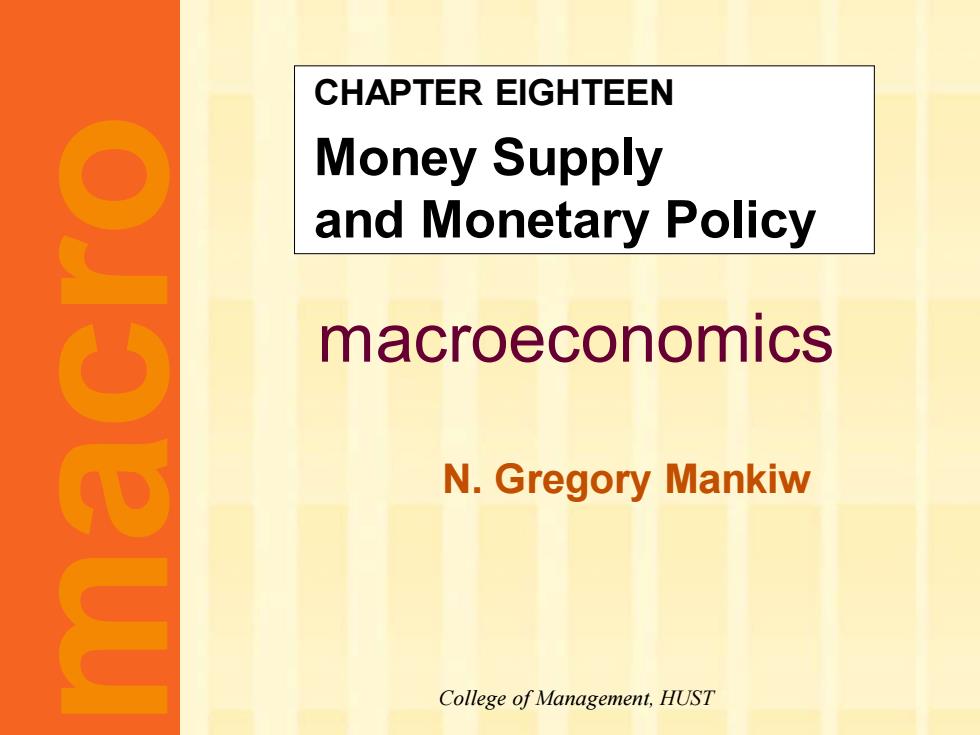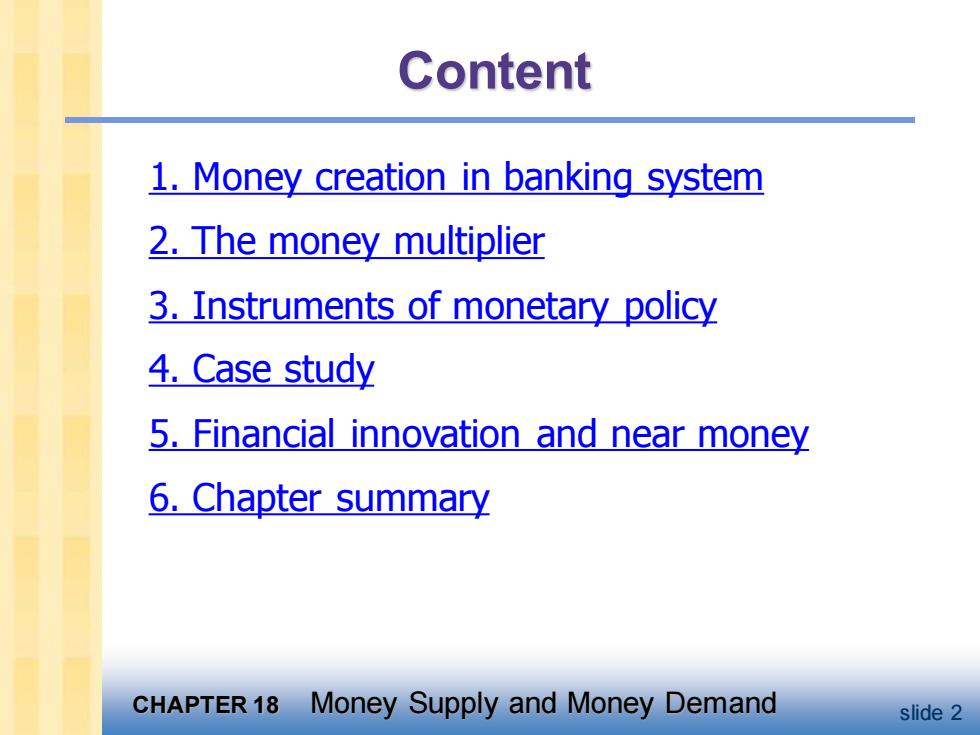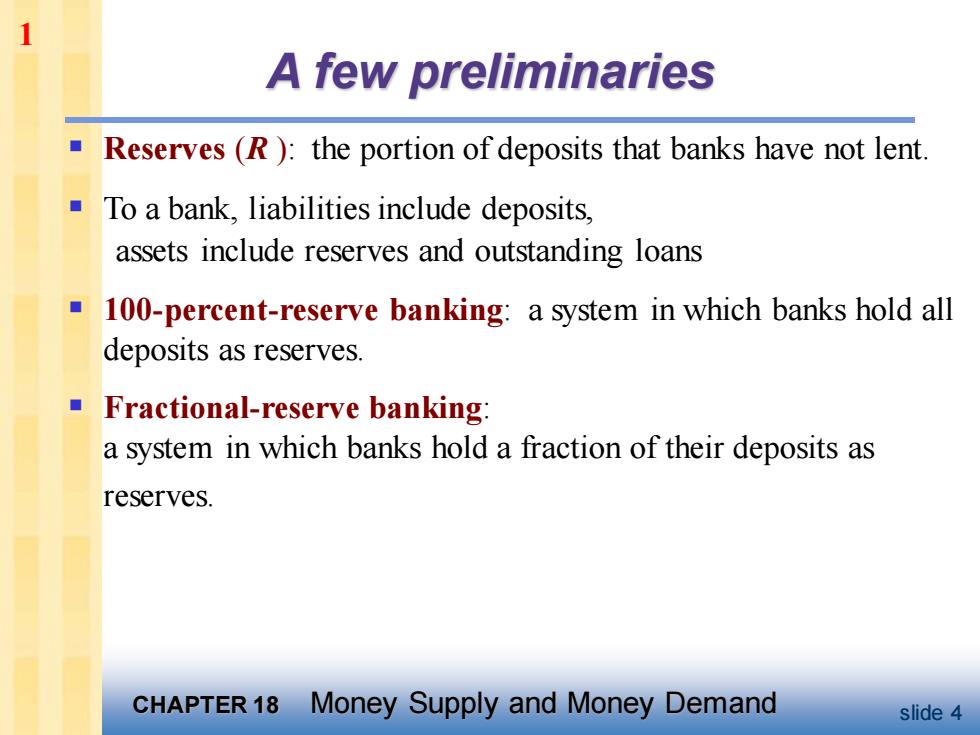
CHAPTER EIGHTEEN Money Supply and Monetary Policy macroeconomics N.Gregory Mankiw College of Management,HUST
macroeconomics N. Gregory Mankiw macro College of Management, HUST CHAPTER EIGHTEEN Money Supply and Monetary Policy

Chapter objectives ■Money supply how the banking system "creates"money three ways the Fed can control the money supply why the Fed can't control it precisely Theories of money demand a portfolio theory -a transactions theory:the Baumol-Tobin model CHAPTER 18 Money Supply and Money Demand slide 1
CHAPTER 18 Money Supply and Money Demand slide 1 Chapter objectives ▪ Money supply – how the banking system “creates” money – three ways the Fed can control the money supply – why the Fed can’t control it precisely ▪ Theories of money demand – a portfolio theory – a transactions theory: the Baumol-Tobin model

Content 1.Money creation in banking system 2.The money multiplier 3.Instruments of monetary policy 4.Case study 5.Financial innovation and near money 6.Chapter summary CHAPTER 18 Money Supply and Money Demand slide 2
CHAPTER 18 Money Supply and Money Demand slide 2 Content 1. Money creation in banking system 2. The money multiplier 3. Instruments of monetary policy 4. Case study 5. Financial innovation and near money 6. Chapter summary

1 Banks'role in the money supply ■ The money supply equals currency plus demand(checking account经常账户)deposits: M=C+D Since the money supply includes demand deposits,the banking system plays an important role. CHAPTER 18 Money Supply and Money Demand slide 3
CHAPTER 18 Money Supply and Money Demand slide 3 Banks’ role in the money supply ▪ The money supply equals currency plus demand (checking account 经常账户) deposits: M = C + D ▪ Since the money supply includes demand deposits, the banking system plays an important role. 1

1 A few preliminaries Reserves (R):the portion of deposits that banks have not lent. To a bank,liabilities include deposits, assets include reserves and outstanding loans 100-percent-reserve banking:a system in which banks hold all deposits as reserves. Fractional-reserve banking: a system in which banks hold a fraction of their deposits as reserves. CHAPTER 18 Money Supply and Money Demand slide 4
CHAPTER 18 Money Supply and Money Demand slide 4 A few preliminaries ▪ Reserves (R ): the portion of deposits that banks have not lent. ▪ To a bank, liabilities include deposits, assets include reserves and outstanding loans ▪ 100-percent-reserve banking: a system in which banks hold all deposits as reserves. ▪ Fractional-reserve banking: a system in which banks hold a fraction of their deposits as reserves. 1